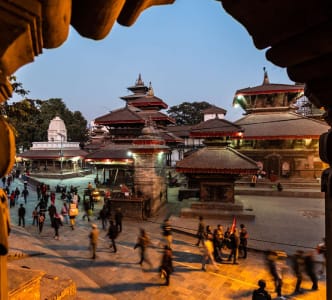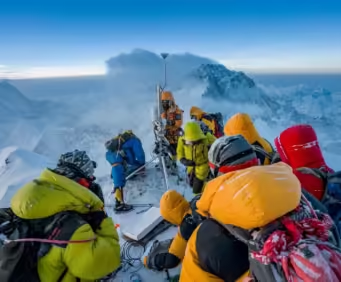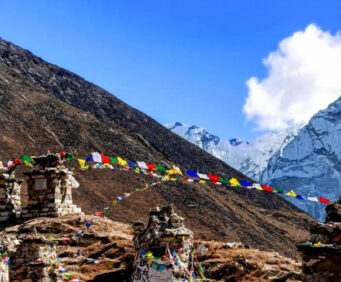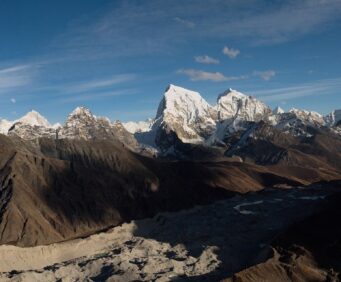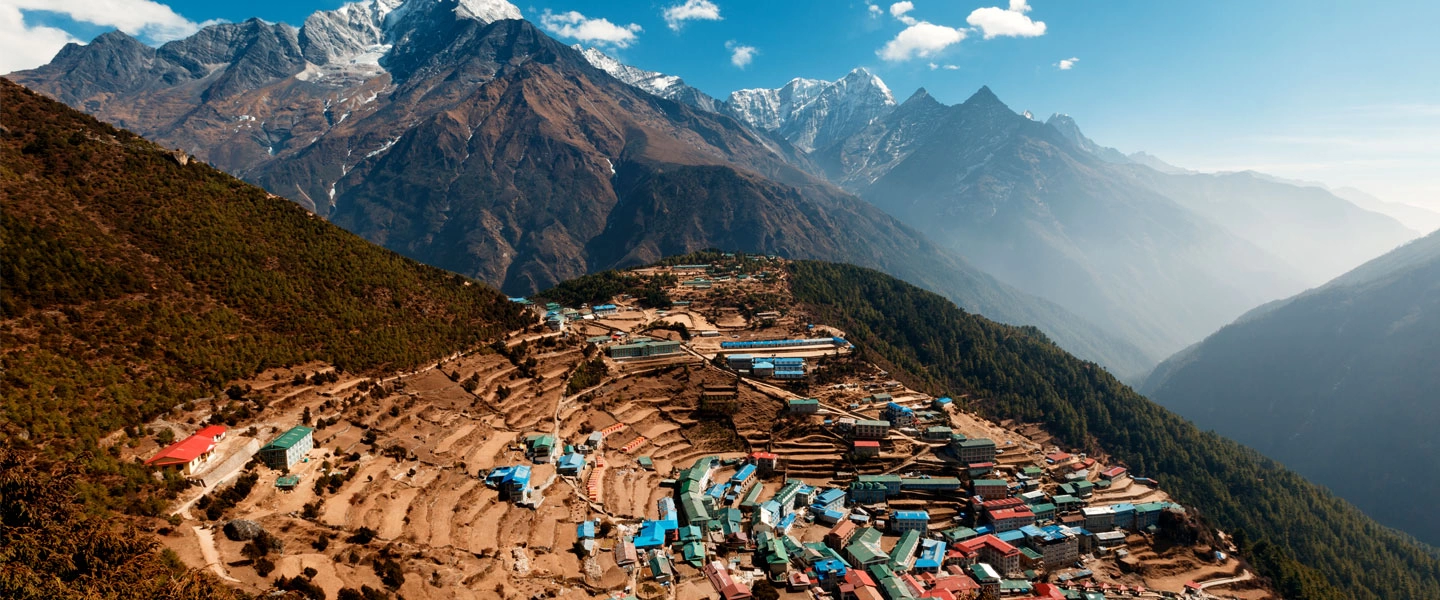
Everest Base Camp Trek: Guide for 2025
5th May, 2025 - Posted By: Himalayan AbodeThe Everest Base Camp Trek is more than a journey-it’s a dream realized for thousands of adventurers each year. From breathtaking Himalayan vistas to vibrant Sherpa culture, every step towards Base Camp is a story of challenge, beauty, and self-discovery. This comprehensive guide covers everything you need to know for a successful trek in 2025, including the best time to visit, route details, packing essentials, altitude advice, and insider tips to make your adventure truly unforgettable.
Why Trek to Everest Base Camp?
- World’s Most Iconic Trek: The trail to Everest Base Camp (EBC) is legendary, offering up-close views of Everest (8,848m), Lhotse, Nuptse, and Ama Dablam.
- Cultural Immersion: Walk through Sherpa villages, visit ancient monasteries, and experience the warmth of Himalayan hospitality.
- Personal Challenge: At 5,364m, reaching Base Camp is a test of endurance and determination-an achievement you’ll remember for life.
When Is the Best Time for the Everest Base Camp Trek?
Choosing the right season is crucial for safety, scenery, and overall enjoyment. Here’s a breakdown of what to expect throughout the year:
Spring (March–May): The Prime Trekking Season
- Weather: Mild temperatures, clear skies, and blooming rhododendrons.
- Atmosphere: The trail is vibrant with trekkers and climbers preparing for Everest summit attempts.
- Daytime Temperatures: 10°C to 18°C at lower elevations; 3°C to 7°C near Base Camp.
- Nighttime Temperatures: 5°C to 8°C in lower regions; can drop below freezing at higher altitudes.
- Highlights: Lush landscapes, colorful flowers, and a lively Base Camp.
Autumn (September–November): Crystal Clear Views
- Weather: Stable, dry, and excellent visibility.
- Daytime Temperatures: 10°C to 20°C at lower elevations; 5°C to 10°C at Base Camp.
- Nighttime Temperatures: Can fall to -10°C or lower at higher altitudes.
- Cultural Bonus: Experience Nepal’s biggest festivals, Dashain and Tihar, in mountain villages.
- Highlights: Crisp mountain views, comfortable trekking conditions, and a festive atmosphere.
Winter (December–February): For the Adventurous
- Weather: Coldest season, but with clear skies and quiet trails.
- Daytime Temperatures: Up to 10°C at lower elevations; -5°C to -10°C at Base Camp.
- Nighttime Temperatures: Can drop to -20°C or lower.
- Highlights: Solitude, snow-draped landscapes, and fewer trekkers.
- Challenges: Extreme cold, some teahouses may close, and trails can be icy.
Monsoon (June–August): Lush but Wet
- Weather: Heavy rainfall, especially at lower elevations, leading to muddy and slippery trails.
- Daytime Temperatures: 10°C to 20°C.
- Nighttime Temperatures: 5°C or lower at higher elevations.
- Highlights: Lush greenery, wildflowers, and minimal crowds.
- Challenges: Flight delays, leeches, and risk of landslides1.
Expert Tip: For the best experience, plan your trek in spring or autumn when the weather is most favorable and the views are spectacular.
Everest Base Camp Trek Route: Day-by-Day Breakdown
The classic EBC trek typically takes 12–14 days, allowing for proper acclimatization. Here’s a standard itinerary:
| Day | Route | Highlights |
|---|---|---|
| 1 | Fly Kathmandu to Lukla (2,860m), trek to Phakding (2,610m) | Thrilling mountain flight, riverside walk |
| 2 | Phakding to Namche Bazaar (3,440m) | Enter Sagarmatha National Park, first Everest views |
| 3 | Acclimatization in Namche Bazaar | Hike to Everest View Hotel, explore Sherpa Museum |
| 4 | Namche to Tengboche (3,860m) | Visit Tengboche Monastery, panoramic mountain views |
| 5 | Tengboche to Dingboche (4,410m) | Alpine landscapes, Imja Valley |
| 6 | Acclimatization in Dingboche | Hike to Nangkartshang Peak for acclimatization |
| 7 | Dingboche to Lobuche (4,910m) | Memorials for fallen climbers, rugged terrain |
| 8 | Lobuche to Gorakshep (5,164m), hike to Everest Base Camp (5,364m) | Reach Base Camp, Khumbu Icefall views |
| 9 | Gorakshep to Kala Patthar (5,545m), descend to Pheriche | Sunrise over Everest, best panoramic views |
| 10–12 | Return trek to Lukla via Namche | Retrace steps, celebrate your achievement |
Note: Itineraries can vary based on acclimatization needs, side trips, and weather conditions.
What to Pack for the Everest Base Camp Trek
Packing smart is essential for safety and comfort. Here’s a checklist for your EBC adventure:
- Clothing:
- Waterproof jacket and trousers
- Lightweight down jacket
- Trekking trousers and shirts (quick-dry)
- Thermals (top and bottom)
- Fleece or warm mid-layer
- Wool hat, sun hat, buff/scarf
- Waterproof gloves and liners
- Hiking socks and spare underwear
- Sturdy, waterproof hiking boots (broken in)
- Lightweight trainers (for evenings)
- Gear:
- Sleeping bag (rated to -15°C or lower)
- Trekking poles
- Headlamp with extra batteries
- Sunglasses (UV protection)
- Water bottles and purification tablets
- Backpack rain cover
- Other Essentials:
- High-SPF sunscreen and lip balm
- First aid kit (including altitude sickness medication)
- Personal toiletries and wet wipes
- Snacks (energy bars, nuts)
- Power bank and charging cables
- Passport, permits, and extra passport photos
Winter Additions: Extra warm layers, heavier sleeping bag, gaiters, and merino socks.
Altitude and Acclimatization: Stay Safe
- Highest Point: Kala Patthar (5,545m), Everest Base Camp (5,364m)
- Risks: Acute Mountain Sickness (AMS), dehydration, exhaustion
- Prevention:
- Ascend slowly, take acclimatization days
- Stay hydrated and eat well
- Avoid alcohol and smoking
- Descend immediately if you experience severe symptoms (headache, nausea, dizziness)
Tip: Most trekkers acclimatize in Namche Bazaar and Dingboche to minimize AMS risk.
Accommodation and Food on the Trail
- Teahouses: Cozy lodges offering basic rooms (twin beds, shared bathrooms). Some have hot showers (for a fee).
- Meals: Dal bhat (rice, lentils, vegetables), noodles, soups, momos, eggs, pancakes. Meat is available but not recommended at higher altitudes due to lack of refrigeration.
- Water: Always purify water before drinking. Bottled water is available but expensive and environmentally unfriendly.
Permits and Logistics
- Permits Required:
- Sagarmatha National Park Entry Permit
- Khumbu Pasang Lhamu Rural Municipality Permit
- How to Get There:
- Fly: Kathmandu to Lukla (most popular, scenic but weather-dependent)
- Alternative: Drive to Jiri or Phaplu and trek an additional 4–7 days
Responsible Trekking: Leave No Trace
- Respect local culture and customs
- Minimize plastic use-bring a reusable water bottle
- Carry out all non-biodegradable waste
- Support local teahouses and businesses
Frequently Asked Questions
Is Everest Base Camp Trek suitable for beginners?
Yes, with proper preparation and fitness. No technical climbing is required, but endurance and acclimatization are essential.
How cold does it get at Base Camp?
Temperatures can drop to -10°C in autumn/spring and -20°C or lower in winter. Nights are always cold-pack accordingly.
Can I trek EBC solo?
Solo trekking is allowed, but hiring a guide enhances safety, cultural understanding, and logistics.
When is Everest Base Camp least crowded?
Late November and February are quieter, but colder. Early spring and late autumn also offer fewer trekkers with manageable weather.
Everest Base Camp Trek: Insider Tips
- Book flights and teahouses early during peak seasons.
- Start early each day to avoid afternoon clouds and secure a bed at busy teahouses.
- Carry cash (Nepali rupees); ATMs are only available in Kathmandu and Namche Bazaar.
- Be flexible: Weather can delay flights and impact plans.
- Listen to your body: Acclimatize, rest, and don’t rush.
Recent Posts
